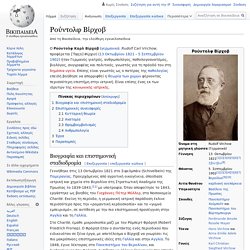

Απόσπασμα από τη Γενική Ανατομία (1801) του Βichat. Let’s begin with the premise that we all have good intentions where our family is concerned.

We want what is best for them, and we want to honor their wishes. Unfortunately, when it comes to end-of-life issues, many of us have not made it clear to our own families the desires we have related to our own care and decisions. The best way to ensure this is for each one of us to fill out the Five Wishes document, which outlines all the important issues to be considered and decided upon prior to our death.
The wishes consist of 1) the person I want to make care decisions for me when I can’t, 2) the kind of medical treatment I want or don’t want, 3) How comfortable I want to be (the choice often comes down to pain medications versus lucidity), 4) how I want people to treat me (how those final moments should play out) and 5) what I want my loved ones to know. Rev. There are countless examples of this. Today I am proud to lead the congregation at Goleta Presbyterian Church. 1963 H Γεννηση της Κλινικής: Μια αρχαιολογία του ιατρικού βλέμματος. 1926-1984 Μισέλ Φουκώ (Michel Foucault)
Προνεωτερική σύλληψη της ασθένειας. ΠΡΙΝ - c. 18αι Ευρώπη. Andreas Vesalius (1514–1564) De humani corporis fabrica ("Οn the fabric of the human body" Vesalius Fabrica. Rembrandt's Anatomy Lesson. Marie François Xavier Bichat (1771-1802) o 'πατέρας' της ανατομίας. Απόσπασμα από τη Γενική Ανατομία (1801) του Βichat. Νεωτερική σύλληψη της ασθένειας. Η μοντέρνα ιατρική εγκαινιάζεται. ΜΕΤΑ το μοντέρνο κλινικό βλέμμα. Ο θάνατος ως "ύψωμα" που δημιουργεί το "βλέμμα" στη ζωή.
Η θεαματοποίηση του νεκρού σώματος. 1983: PBS Broadcasts Live Open Heart Surgery. Our Museum - Berliner Medizinhistorisches Museum EN. The Berlin Museum of Medical History is the successor of Rudolf Virchow's Pathological Museum.

It is a public museum with regular opening hours and seeks to offer visitors insights into the fascinating history of medicine over the last four centuries. The permanent collection currently shows some 750 objects comprising pathological-anatomical wet and dry specimens as well as models and graphics from central medical locations: e.g. the anatomical theater, the laboratory and the patients ward. The museum's special exhibitions focus on current aspects of medicine and medical history. They range from miracle healing in the ancient world to current advances in forensic medicine.
Furthermore art and medicine frequently meet in small interventions or larger presentations. The Museum is a popular place for numerous events. About 90,000 people visit the museum per year. 04ccafeabc838e260a83a96891d3f488388b. Charite hospital - Hektoen International. Annabelle SlingerlandLeiden, the Netherlands On November 14, 1709, King Frederik I of Prussia planted a small seed that over the following three centuries grew, branch by branch, into one of the foremost medical research and treatment centers in the world.

Plague House, 1709 In 1709 a malignant outbreak of bubonic plague that had almost depopulated Prussia was marching on to Brandenburg and Berlin. In response to the impending danger, the wary King Frederick I of Prussia, attended by his palace physicians Hoffmann and von Nidda, ordered that a tiny hospital be built outside the city walls. Αιθουσα διδασκαλιας. Charité (TV series)
Charité is a German television drama.

The first season was directed by Sönke Wortmann, and was written by Grimme-Preis winner Dorothee Schön and Sabine Thor-Wiedemann. The season is set during 1888 and the years following at Berlin's Charité hospital. The series premiered on 21 March 2017 on the German channel Das Erste, and has been distributed in the USA on Netflix since April 2018. Between breakthroughs in medical research and enormous social upheavals in 1888, the Charité is well on its way to becoming the most famous hospital in the world. It is a city within the city, following its own laws and rules. See Charité at War. Ρούντολφ Βίρχοβ. Ο Ρούντολφ Καρλ Βίρχοβ (γερμανικά: Rudolf Carl Virchow, προφέρεται [ˈfɪɐ̯ço] Φίρχιο) (13 Οκτωβρίου 1821 – 5 Σεπτεμβρίου 1902) ήταν Γερμανός γιατρός, ανθρωπολόγος, παθολογοανατόμος, βιολόγος, συγγραφέας και πολιτικός, γνωστός για τη πρόοδό του στη δημόσια υγεία.

Επίσης είναι γνωστός ως ο πατέρας της παθολογίας επειδή βοήθησε να απορριφθεί η θεωρία των χυμών φέρνοντας περισσότερη επιστήμη στην ιατρική. Είναι επίσης ένας εκ των ιδρυτών της κοινωνικής ιατρικής. Βιογραφία και επιστημονική σταδιοδρομία[Επεξεργασία | επεξεργασία κώδικα] Γεννήθηκε στις 13 Οκτωβρίου 1821 στο Σιφελμπάιν (Schivelbein) της Πομερανίας. Προερχόμενος από αγροτική οικογένεια, σπούδασε ιατρική και χημεία στο Βερολίνο στη Στρατιωτική Ακαδημία της Πρωσίας το 1839-1843,[11] με υποτροφία.
Στο Charité, έμαθε μικροσκοπία μαζί με τον Ρόμπερτ Φρόρηπ (Robert Friedrich Froriep). Επιστημονικές συνεισφορές[Επεξεργασία | επεξεργασία κώδικα] Κυτταρική θεωρία[Επεξεργασία | επεξεργασία κώδικα] Phineas Gage (1823-1860)